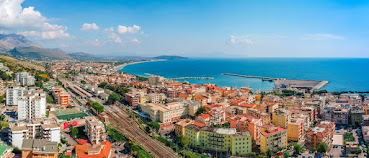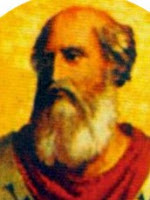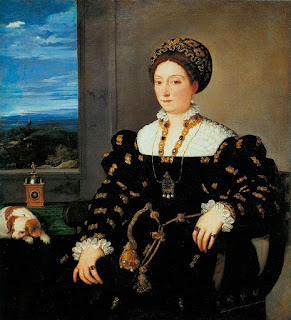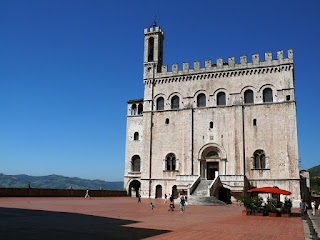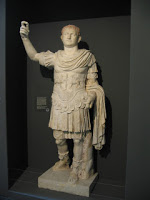NEW - Cicero - politician and philosopher
Roman writer and orator revered by Renaissance scholars
Marcus Tullius Cicero, the Roman lawyer, politician, philosopher and great orator whose rediscovered works were an important driver of the Renaissance in the 14th century, was born on this day in 106BC in Arpinum, a hill town about 100km (62 miles) southeast of Rome known today as Arpino. A loyal supporter of the Roman Republic, Cicero’s brilliance as a student of Roman law and his effectiveness as a speaker led to his rapid rise in Roman politics, which saw him become the youngest citizen to attain the rank of consul, the highest political office of the republic, without hailing from a political family. Although his political career foundered after his opposition to the secret alliance between Caesar, Pompey and Crassus known as the First Triumvirate, forced him into exile, Cicero turned to writing, producing many works relating to philosophy, as well as hundreds of letters and speeches. Much of his work disappeared after his death, but was rediscovered by 14th century scholars, most notably Francesco Petrarca - Petrarch - as academics sought to enhance their knowledge by seeking out ancient Greek and Roman texts. Read more…
_________________________________________________________
Sergio Leone – film director
Distinctive style of ‘Spaghetti Western’ creator
Italian film director, producer and screenwriter Sergio Leone was born on this day in 1929 in Rome. Leone is most associated with the ‘spaghetti western’ genre of films, such as the Dollars trilogy of westerns featuring Clint Eastwood. He had a distinctive film-making style that involved juxtaposing extreme close-up shots with lengthy long shots. Leone’s father was a film director and his mother was a silent film actress. He went to watch his father at work on film sets from an early age. He dropped out of university to begin his own career in the industry at the age of 18 as an assistant to the director Vittorio De Sica. He began writing screen plays and worked as an assistant director on Quo Vadis and Ben Hur at Cinecittà in Rome. When the director of The Last Days of Pompeii fell ill, Leone was asked to step in and complete the film. He made his solo debut as a director with The Colossus of Rhodes in 1961. Leone turned his attention to making spaghetti westerns in the 1960s and his films, A Fistful of Dollars, For a Few Dollars More and The Good, the Bad and the Ugly were big financial successes. Read more…
__________________________________________________________
Renato Carosone – singer-songwriter
Composer revived popularity of the traditional Neapolitan song
Renato Carosone, who became famous for writing and performing Neapolitan songs in modern times, was born Renato Carusone on this day in 1920 in Naples. His 1956 song Tu vuo’ fa’ l’Americano - 'You want to be American' - has been used in films and performed by many famous singers right up to the present day. Torero, a song released by him in 1957, was translated into 12 languages and was at the top of the US pop charts for 14 weeks. Carosone studied the piano at the Naples Conservatory of San Pietro a Majella and obtained his diploma in 1937, when he was just 17. He went to work as a pianist in Addis Ababa and then served in the army on the Italian Somali front. He did not return to Italy until 1946, after the end of the Second World War. Back home, he had to start his career afresh and moved to Rome, where he played the piano for small bands. He was asked to put together a group for the opening of a new club and signed Dutch guitarist, Peter van Houten and Neapolitan drummer, Gegè di Giacomo, with whom he launched the Trio Carosone. When Van Houten left to pursue a solo career, Di Giacomo remained with Carosone and they recruited more musicians to form a new band. Read more…
___________________________________________________________
Pietro Metastasio – poet and librettist
From street entertainer to leading libretto writer
Pietro Metastasio, who became Europe’s most celebrated opera librettist in the 18th century, was born on this day in 1698 in Rome. He was christened Pietro Antonio Domenico Trapassi, one of four children born to Felice Trapassi, from Assisi and Francesca Galasti from Bologna. His father served in the papal forces before becoming a grocer in Via dei Cappellari. While still a child, Pietro could attract crowds by reciting impromptu verses. On one occasion, in 1709, Giovanni Vincenzo Gravina, director of the Arcadian Academy, stopped to listen. He was so impressed that he made the young boy his protégé and later adopted him, changing his surname to Metastasio. He provided the young Metastasio with a good education and encouraged him to develop his talent. When Gravina was on his way to Calabria on a business trip, he exhibited Metastasio in the literary circles of Naples, but after the young boy became ill, he placed him in the care of a relative to help him recuperate. Gravina decided Metastasio should never improvise again but should concentrate on his education and reserve his talent for nobler efforts. Read more...
________________________________________________________
Gianfranco Fini – politician
Party leader who moved away from fascism
Gianfranco Fini, former leader of the Alleanza Nazionale (National Alliance), the post-fascist political party in Italy, was born on this day in 1952 in Bologna. Fini has been President of the Italian Chamber of Deputies and was Deputy Prime Minister and Minister of Foreign Affairs in Silvio Berlusconi’s Government from 2001 to 2006. His father, Argenio ‘Sergio’ Fini, was a volunteer with the Italian Social Republic, a Fascist state in Northern Italy allied with Germany between 1943 and 1945. His maternal grandfather, Antonio Marani, took part in the march on Rome, which signalled the beginning of Italian Fascism in 1922. Fini’s first name, Gianfranco, was chosen in memory of his cousin, who was killed at the age of 20 by partisans after the liberation of northern Italy on 25 April, 1945. Fini became interested in politics at the age of 16, after he was involved in a clash with communist activists and he went on to join the Italian Social Movement (MSI), a neo-fascist political party. After graduating from La Sapienza University in Rome he became involved with the party’s newspaper, Il Secolo d’Italia. Read more…









